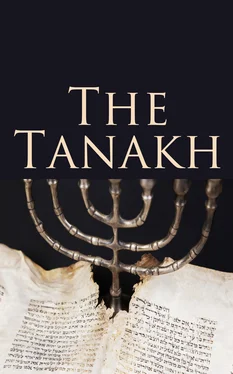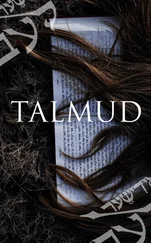The method employed by the Board was as follows:
In preparing the manuscript for consideration by the Board of Editors, Professor Margolis took into account the existing English versions, the standard commentaries, ancient and modern, the translations already made for the Jewish Publication Society of America, the divergent renderings from the Revised Version prepared for the Jews of England, the marginal notes of the Revised Version, and the changes of the American Committee of Revisers. Due weight was given to the ancient versions as establishing a tradition of interpretation, notably the Septuagint and the versions of Aquila, Symmachus, and Theodotion, the Targums, the Peshitta, the Vulgate, and the Arabic version of Saadya. Talmudic and midrashic allusions and all available Jewish commentators, both the great mediæval authorities, like Rashi, Kimhi, and Ibn Ezra, and the moderns S. D. Luzzatto, Malbim, and Ehrlich, as well as all the important non-Jewish commentators, were consulted. On this basis, a manuscript was prepared by the Editor-in-Chief and a copy sent to every member of the Board of Editors. Sixteen meetings, covering a period of seven years and occupying one hundred and sixty working days, were held, at which the proposals in this manuscript and many additional suggestions by the members of the Board were considered. Each point was thoroughly discussed, and the view of the majority was incorporated into the manuscript. When the Board was evenly divided, the Chairman cast the deciding vote. From time to time sub-committees were at work upon points left open, and their reports, submitted to the Board, were discussed and voted upon. The proof of the entire work was sent to each member of the Board for revision, and the new proposals which were made by one or another were in turn submitted to a vote by correspondence and to a final vote at the last meeting of the Board, held in October–November, 1915.
The present translation is the first for which a group of men representative of Jewish learning among English-speaking Jews assume joint responsibility, all previous efforts in the English language having been the work of individual translators. It has a character of its own. It aims to combine the spirit of Jewish tradition with the results of biblical scholarship, ancient, mediæval, and modern. It gives to the Jewish world a translation of the Scriptures done by men imbued with the Jewish consciousness, while the non-Jewish world, it is hoped, will welcome a translation that presents many passages from the Jewish traditional point of view.
The repeated efforts by Jews in the field of biblical translation show their sentiment toward translations prepared by other denominations. The dominant feature of this sentiment, apart from the thought that the christological interpretations in non-Jewish translations are out of place in a Jewish Bible, is and was that the Jew cannot afford to have his Bible translation prepared for him by others. He cannot have it as a gift, even as he cannot borrow his soul from others. If a new country and a new language metamorphose him into a new man, the duty of this new man is to prepare a new garb and a new method of expression for what is most sacred and most dear to him.
We are, it is hardly needful to say, deeply grateful for the works of our non-Jewish predecessors, such as the Authorised Version with its admirable diction, which can never be surpassed, as well as for the Revised Version with its ample learning—but they are not ours. The Editors have not only used these famous English versions, but they have gone back to the earlier translations of Wycliffe, Tyndale, Coverdale, the Bishops' Bible, and the Douai Version, which is the authorised English translation of the Vulgate used by the Roman Catholics; in a word, upon doubtful points in style, all English versions have been drawn upon. The renditions of parts of the Hebrew Scriptures by Lowth and others in the eighteenth century and by Cheyne and Driver in our own days were likewise consulted.
As to the text and order of the biblical books, the present translation follows Jewish tradition, the Sacred Scriptures having come down in a definite compass and in a definite text. They are separated into three divisions: Law (Torah, Pentateuch), Prophets (Nebi'im), Writings (Ketubim) . Each of these possesses a different degree of holiness or authority. In the Prophets and the Writings the order of the books varies in manuscripts or among Jewish authorities; but there is absolute agreement as to the compass of these two divisions, and no book is transposed from the one into the other. Thus Ruth, Lamentations, and Daniel are all placed in the division of Writings—not among the Prophets, as in non-Jewish versions.
With every step by which each of the three parts was sealed, nothing to be added or to be taken away, the text was likewise fixed and thenceforth made the object of zealous watchfulness. Even with regard to the latest book of our Scriptures, we read its text substantially in the form in which the great Rabbi Akiba read it, he who said that the system by which the sacred text was guarded constituted a fence about the Scriptures. In that system, at first oral and later committed to writing, the letters were actually counted and lists made, to the end that no alterations should creep in at the hands of careless scribes The first to collect the notes known as Masorah was Jacob ben Haim Ibn Adonijah, the editor of the second Rabbinic Bible. In our own day many scholars have been prominent in this field of labour, chief among whom are Wolf Heidenheim, S. Frensdorff, S. Baer, and C. D. Ginsburg. We have followed Baer's text 2and for the parts not edited by him that of Ginsburg. Not only does the text known as the masoretic represent the text current in the Synagogue with regard to consonants, but also with regard to its signs standing for vowels and accents, both of which embody the interpretation accepted by the Synagogue. While in the scrolls which are read in the Synagogue the bare consonants are alone permitted, readers must prepare themselves from copies allowed for private use, in ancient times written and now printed, which contain the additional signs for vowels and accents. A translation must naturally follow the guide of the latter. Moreover, the public reader is bound in certain cases to substitute mentally other consonants in the place of those found in the scrolls, in accordance with the marginal annotations in the copies intended for private use. These variants are taken traditionally for corrections, and the public reader who persists in ignoring them forfeits his position. It is true that in the case of such variations the Jewish commentators of the Middle Ages sought to elicit a meaning also from the textual reading, and seem here and there tacitly to give it preference, but all this partakes of the nature of private judgment, and does not affect the uniform practice of the public readings in the Synagogue. While as a rule the margin (Kere) was followed, we have occasionally adopted the consonants of the text (Ketib), as for instance in Psalm cxxxix. 16, and II Chronicles xxiv. 27; xxxiv. 9.
A translation destined for the people can follow only one text, and that must be the traditional. Nevertheless a translator is not a transcriber of the text. His principal function is to make the Hebrew intelligible. Faithful though he must be to the Hebrew idiom, he will nevertheless be forced by the genius of the English language to use circumlocution, to add a word or two, to alter the sequence of words, and the like. In general, our rule has been that, where the word or words added are implied in the Hebrew construction, no device is used to mark the addition; where, on the other hand, the addition is not at once to be inferred from the original wording and yet seems necessary for the understanding, it has been enclosed in brackets. Naturally opinion will differ as to what may be deemed an addition warranted by the Hebrew construction and what may not, but as intelligibility was the principal aim, the Editors have felt justified in making their additions, sparingly it is true, but nevertheless as often as the occasion required.
Читать дальше












